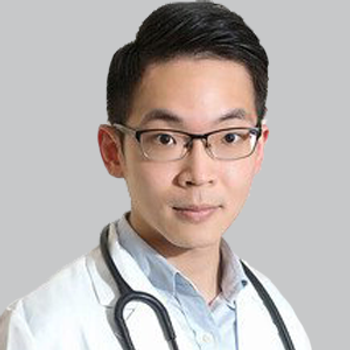
Subcutaneous Immunoglobulin Effective Alternative to Intravenous for Myasthenia Gravis
Subcutaneous immunoglobulin is an effective and well-tolerated alternative to intravenous immunoglobulin for myasthenia gravis.
Mazen M. Dimachkie, MD
Subcutaneous immunoglobulin (SCIg) is an effective and well-tolerated alternative to intravenous immunoglobulin (IVIg) for patients with myasthenia gravis (MG), according to findings from an open-label phase 2 study presented at the 2018 AANEM Annual Meeting.1
In the study, mean quantitative myasthenia gravis (QMG) scores remained stable for patients transitioning from IVIg to SCIg (20% liquid formulation). The mean QMG with IVIg therapy at baseline was 9.77 compared with 10.57 after 12 weeks of SCIg therapy. The median QMG score was 10 for both IVIg at baseline and SCIg at week 12. The median MG composite score was 4 at 12 weeks with SCIg compared with 6 at baseline for IVIg (P = .047).
"This phase 2 study supports further investigation of subcutaneous immunoglobulin as an alternative to intravenous immunoglobulin maintenance for myasthenia gravis," said principal investigator Mazen M. Dimachkie, MD, professor and director, Neuromuscular Division, University of Kansas. "Subcutaneous immunoglobulin is safe, efficacious, and well-tolerated in myasthenia gravis patients who are on stable IVIg dosage."
In March 2018, the FDA approved the SCIg (Hizentra) as a treatment for patients with chronic inflammatory demyelinating polyneuropathy (CIDP). In this disease, studies have shown that SCIg is preferred over IVIg in 69% of cases, Dimachkie said this is due to increased flexibility, more stable strength, milder side effects, and shorter administration time.2
Building on the experience in CIDP, the phase 2 study enrolled 23 patients with MGFA grade II (n = 17) and grade III (n = 5) MG. The mean age of patients was 51.4 years and the gender was evenly split between male and female. All patients had RNS decrement and were positive for AcHR antibodies. Thirty-five percent of patients had a prior thymectomy and all patients were on stable IVIg.
Of the 23 patients, 1 withdrew prior to receiving SCIg due to seizures. Three patients withdrew from the trial during the SCIg treatment phase, 2 due to needle aversions before week 4 and 1 from worsening MG at week 7 that was considered a treatment failure. Overall, 19 patients completed the full SCIg treatment phase.
In the primary analysis, 86.4% of patients successfully transitioned from IVIg to SCIg therapy (95% CI, 0.720-1.000; P = .0179). In a sensitivity analysis that included all 22 enrolled patients, the success rate was 77.3%, which did not reach statistical significance for the primary endpoint (95 CI, 0.600-0.948; P = .1138). However, in a separate sensitivity analysis that excluded patients with missing data (N = 20), the success rate was 85% (17/20; 0.694-1.000; P = .0304).
The median MG-activities of daily living score at 12 weeks was 3 with SCIg compared with 3 for IVIg at baseline. The median 15-item MG quality of life score was 16 with SCIg at 12 weeks compared with 22 for IVIg, although this difference was not statistically significant (P = . 612). Overall, IgG levels remained stable with SCIg from week 1 to 12.
Local site reactions were the most common treatment-related adverse events with SCIg. These occurred in 14% of patients during the SCIg treatment phase of the trial. The occurrence was 0.7% across all infusions given during the trial (1278 total infusions).
Overall, the mean volume per infused site was 30 mL (range, 30-50). At week 12, most participants could receive 50 cc per site. The weekly volume ranged from 80 mL to 300 mL and each infusion session ranged from 60 minutes to 2 hours and 41 minutes. The SCIg infusions could be delivered at home, following a structured training program, Dimachkie said.
Treatment satisfaction questionnaire for medication (TSQM) scores did not statistically differ from baseline with IVIg to week 12 with SCIg. The median TSQM for convenience was 75 versus 69.4, for SCIg and IVIg, respectively, for effectiveness the medians were 79.2 and 75, respectively. The TSQM for satisfaction was 83.3 for SCIg and 75 for IVIg.
A phase 3 pilot study is currently enrolling patients to explore the feasibility and efficacy of SCIg for MG exacerbation. The study, which is currently enrolling 30 patients, hopes to uncover whether SCIg could be a more cost-effective alternative to IVIg. This trial is currently only available in Canada (NCT02774239).
References
- Dimachkie MM. Subcutaneous Immunoglobulin in MG: a North American Open Label Study. Presented at: 2018 AANEM Annual Meeting, National Harbor, MD, October 10-13, 2018.
- Markvardsen LH, Debost JC, Harbo T, et al. Subcutaneous immunoglobulin in responders to intravenous therapy with chronic inflammatory demyelinating polyradiculoneuropathy. Eur J Neurol. 2013;20(5):836-84
Newsletter
Keep your finger on the pulse of neurology—subscribe to NeurologyLive for expert interviews, new data, and breakthrough treatment updates.




























